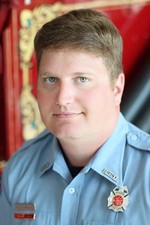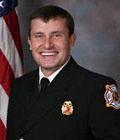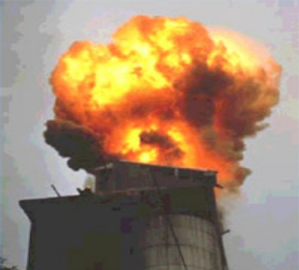
Captain Joseph Jerabeck, Rogers Fire Department
Life Saving Minutes
Fire Chief Jenkins told us that in Rogers, the survival rate for heart attacks has gone from approximately seven percent in 2010 to almost fifty percent today. He credits the fast action of the fire department in responding to 911 calls and the public’s knowledge of CPR. If a person performs CPR immediately on the heart attack victim, that can mean the difference between life and death until qualified medics arrive.
Live Saving Steps
Captain Jerabeck went through the steps with us. First you shake the person to see if they are truly having a heart attack or merely asleep. Next you call 911 on your cell phone, put the phone on speaker and lay it on the ground while you are talking to dispatch. If the person is in bed or in a position other than flat on their back you move them to a hard surface on their back. Then you begin compressions on the center of their chest by placing the heel of your hand on the breastbone at the center of the person’s chest. Then you place your other hand on top of your first hand and interlock your fingers. Keeping your elbows straight you press down hard using your body weight at 100 compressions per minute. The compression should be hard enough compress the chest approximately one third of the chest depth. Captain Jerabeck told us that tempo is the same as the beat to the song, “Staying Alive”. You continue the compressions until help arrives.
Automated External Defibrillator
Captain Jerabeck went through the use of an automated external defibrillator (AED). CPR must be continued until the AED is turned on. The AED has diagrams on how to attach the pads and prompts on how to use the device. Fire Chief Jenkins told us that someday he hopes AEDs will be as common as the fire extinguishers that are now on our walls.
PulsePoint
Rogers not only has an I.S.O. Class 1 Fire Department, but Rogers utilizes a cool app that shows the current activity of the Rogers Fire Department. PulsePoint is a free app that allows the public to respond with CPR to a nearby person who is having a heart attack until the fire department arrives.
We hope we will never have to use the maneuvers we learned yesterday, but if we do we will be prepared thanks to the excellent training from the Rogers Fire Department. If we can assist you, with further information about this life saving program, contact us at (479) 202-5200 or visit our website, www.oliverlawfirm.com.
a Free Consultation




